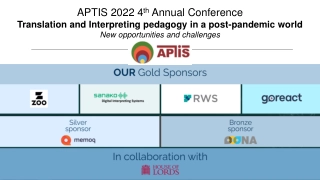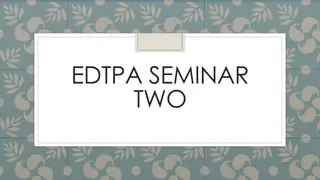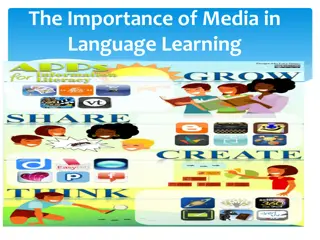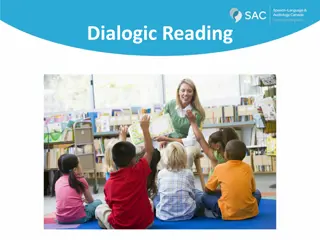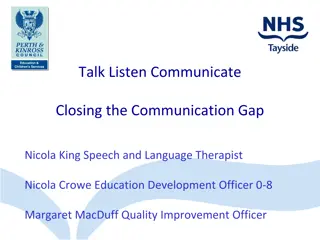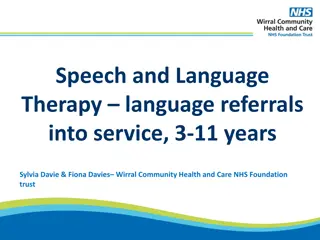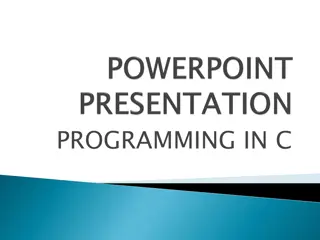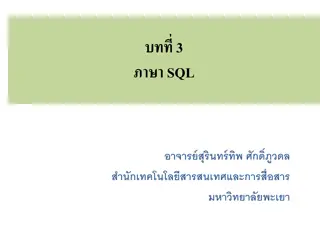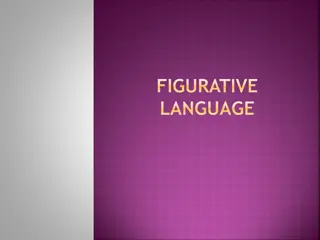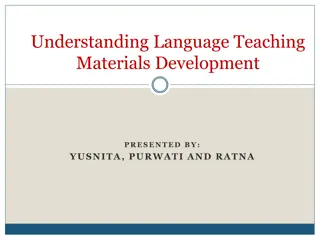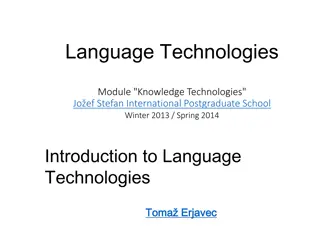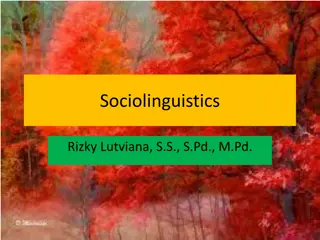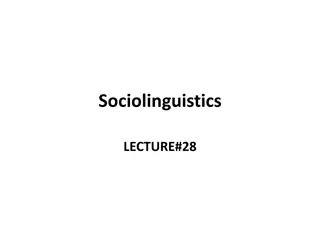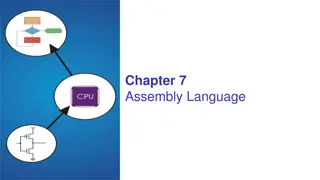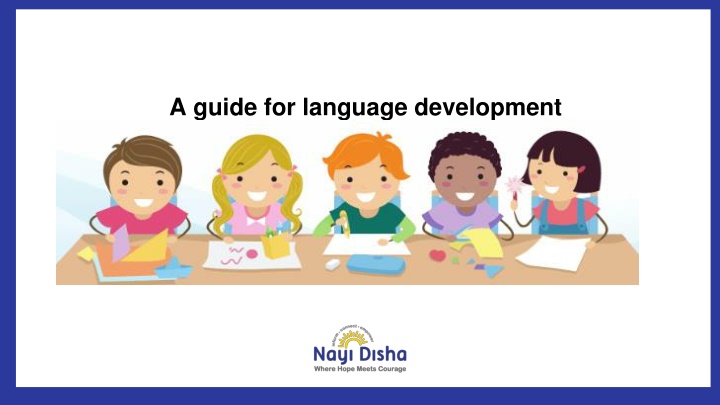
Family Role in Language Development and Essential Parenting Skills
Discover the crucial role of family in language development for children and essential skills for parents to enhance language learning through interactive activities and play. Learn how to create a language-rich environment to support your child's vocabulary growth effortlessly.
Download Presentation

Please find below an Image/Link to download the presentation.
The content on the website is provided AS IS for your information and personal use only. It may not be sold, licensed, or shared on other websites without obtaining consent from the author. If you encounter any issues during the download, it is possible that the publisher has removed the file from their server.
You are allowed to download the files provided on this website for personal or commercial use, subject to the condition that they are used lawfully. All files are the property of their respective owners.
The content on the website is provided AS IS for your information and personal use only. It may not be sold, licensed, or shared on other websites without obtaining consent from the author.
E N D
Presentation Transcript
Role of family in Language development Children learn to talk and communicate in an environment that supports the learning of language. It is important to enrich the environment in such a way that it motivates the child to learn and develop their vocabulary. Family plays an important role here, as children are most surrounded by family in the early stages of development. Learning a language does not have to be a table and chair learning, rather; it can happen simply through play and everyday activities.
Role of family in Language development It is also crucial that the child is surrounded by a single language, rather than a mixture of different languages, which may be difficult to grasp. For simultaneously in the house, the child may be confused on which language to pick up. So it is important that a single language is used in the child s immediate environment. example; if both Hindi and Telugu are used
Essential skills for a parent Combine your words with facial expressions and appreciate with words like Wow Follow up with questions so that your child is encouraged to learn Notice the actions of your child, and respond to them. Use rhymes and other play activities to learn Ensure that you get their attention when talking to them If your child names an object, repeat it back multiple times. Avoid saying you are wrong . Instead, give the correct answer Always try to make learning FUN!
Activities for language development 1. Prompting:When you notice your child doing an action, for example; walking towards you, describe the action and say walk . 1. Give your child simple instructions to follow. If the child does not follow, help the child follow the instruction by physically assisting the child. 1. For example, say Stand up . If the child does not follow, help the child up using your hands, while also saying Stand up playfully. 1. Over time, when the child has learnt the words, fade the prompting and completely remove them when the child has clearly learnt the word.
Mirroring and Labelling Mirror an action that the child is interested in, exactly as they do it. For eg; if the child throws a ball, throw another ball in the same way. Label the action immediately after you do it. Playfully describe the action you were doing. For example, when throwing the ball, say Throw the ball (use emphasis on the word you want your child to learn) Encourage your child to repeat the action, and repeat with them, along with the word. Appreciate them for following you.
Picture book reading Use picture books with large pictures of common objects you see or actions you use. You can use newspaper/magazine cutouts or printed pictures to create the book. Read with your child by pointing to pictures and naming them. Prompt them to do the same. Over time, try to pronounce the first letters of the word, so that the child can follow up with the entire word after you.
WH questions This is a playful game in which you ask the child WH questions while pointing to different objects in your environment. Say what is this? and indicate through facial expression to answer the question. If the child says the correct word (for example, car), say Yesss, car! . The question can be repeated in different forms such as who is this? what is that? Where is the car? etc.
Learning functions Once your child has learnt a set of objects, it is important that they learn the function of these objects as well. For this, it is best to combine pictures of the objects with a description using the one For example; (any object in the environment, or favourite object of child) Picture of ball - the one you throw Picture of cat - the one that goes Meow Picture of spoon - the one you eat with
Learning adjectives or descriptive words When your child has learnt a few words, help them learn descriptions. Start with simple sentences like tall mama , small baby , red car etc. After your child has learnt a few adjectives, start doing follow up questioning such as: o What is this? (indicating ball) o When your child answers ball , ask, what ball? , then say red ball and encourage your child to repeat after you. Always remember to appreciate and reward your child with something they like, so that they are encouraged to continue learning.
Sorting objects Select a few objects and place them in front of two boxes. Allot one function or description to each box. For example; o Keep two boxes; one box with a few onions, and the other with potatoes. o Keep some onions and potatoes outside the box, to be sorted. o Sort the first few objects yourself while asking what is this? followed by Onions . If the child responds saying Onion , say yes, onions and put this in the box for Onions. Follow the same for potatoes and then encourage your child to sort.
Learning sentences Once your child has learnt a few words and actions, start using them in simple formed sentences, in a fun and playful manner. For example; when you are eating, say I am eating cucuumbeeerrr pointing to yourself and you are eating pointing to yourself. Note: In the initial stages, your child may use third person narrative (referring to oneself with their name). For example; they may say Anand is eating instead of I am eating . This is okay. Try to encourage your child to replace this with I and you over time.
Some points to remember Remember that in the early stages, you are simply increasing your child s exposure to words, and rewarding the child when they listen. Responses in the form of words may come gradually. Ensure that the responses and usage of language are consistent within the family. Using different words to describe the same object/action may be confusing for the child. Ensure not to bombard your child with too many words at the same time. This may be overwhelming, and the words may not stay longer with the child.

